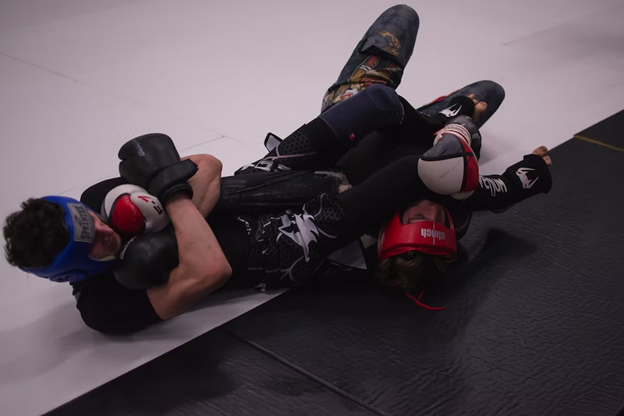Mixed martial arts (MMA) is a complex, fast-paced sport that combines various disciplines, testing its competitors’ physical prowess and strategic acumen. This multidimensional nature of MMA directly influences betting odds, with bookmakers considering numerous factors when determining odds for a fight.
The sport is rich in statistics that are pivotal in comprehending fighters’ strengths, weaknesses, and overall performance, and these stats often play a significant role in shaping MMA betting odds. Through analyzing data from FightMatrix and other similar platforms, this discussion attempts to unravel the most indicative predictors of victory in MMA, from strike accuracy to takedown defense.
These metrics don’t just inform fight strategies, but also heavily influence betting odds. With a comprehensive look at these factors, we can start to demystify the factors that contribute to a fighter’s success and the underlying mechanisms of MMA betting odds.
Examining Knockout Ratio in MMA
MMA’s knockout ratio is a powerful statistical tool that can shed light on a fighter’s potential for winning matches decisively. This metric, defined as the proportion of a fighter’s victories achieved via knockout or technical knockout, speaks volumes about their striking power and precision.
Fighters with a high knockout ratio are often perceived as more dominant competitors who can finish bouts without relying on judges’ decisions. By analyzing this ratio, we can identify fighters who pose a substantial threat to their opponents from the outset, increasing their winning odds.
However, a high knockout ratio should not overshadow other key skills; an MMA match’s unpredictable nature requires well-rounded competence. Nonetheless, a fighter with a high knockout ratio can be seen as a formidable adversary, heightening their victory potential.
Taking a Closer Look at Striking Accuracy
Striking accuracy in MMA is a critical statistic that reflects a fighter’s precision in landing their strikes – punches, kicks, elbows, or knees – on their opponent. High striking accuracy often signifies superior technique, timing, and spatial awareness, essential attributes for an effective offense.
This statistic can significantly impact fights as fighters with higher striking accuracy can inflict more damage, control the pace of the bout, and more effectively neutralize their opponents’ tactics. Moreover, it can alter the dynamics of a fighter’s career; consistent striking accuracy may increase their chances of winning, enhance their reputation, and potentially earn them more lucrative fights.
While it’s just one facet of the multifaceted MMA, striking accuracy serves as a clear indicator of a competitor’s offensive prowess and tactical efficiency.
Investigating Submission Success Rate
The submission success rate in MMA is a valuable statistic that quantifies a fighter’s effectiveness in forcing their opponents to tap out. This metric, defined as the number of successful submissions relative to total attempts, can reveal much about a fighter’s ground game and grappling skills.
A high submission success rate often indicates a fighter’s adeptness in Brazilian Jiu-Jitsu, wrestling, or judo, demonstrating their ability to control opponents and exploit vulnerabilities on the ground. Those who excel in this statistic can often shift the tide of a fight, catching adversaries off-guard with a swift and precise submission attempt.
While striking prowess often grabs the limelight, the submission success rate highlights the crucial and potentially fight-ending prowess of those most adept in the art of grappling and submission.
Understanding the Significance of Takedown Defense
Takedown defense in MMA reflects a fighter’s ability to resist and counter their opponent’s attempts to take the fight to the ground. High takedown defense indicates strong grappling skills, balance, and tactical awareness, allowing fighters to maintain their preferred fight domain, usually standing.
Techniques utilized in takedown defense include sprawling (throwing the legs back to prevent a double-leg takedown), undercooking (inserting an arm under the opponent’s arm), and using the cage to stay upright. These techniques help fighters evade or counter grappling advances, providing opportunities to retaliate.
Takedown defense is particularly crucial when facing wrestling-centric opponents, as it can disrupt their game plan, forcing them to stand and strike. Thus, understanding these stats and techniques helps illustrate the tactical layers that unfold within the Octagon.
Conclusion
Knockout ratio, striking accuracy, submission success rate, and takedown defense have all significantly impacted MMA success. Therefore, fighters and aspiring champions must pay close attention to each factor if they hope to rise to the top of the ranks.
Through effective physical conditioning, thorough practice, and tactical preparation, even amateur fighters can have a competitive edge against those with more experience. With that being said, an understanding of all the variables discussed in this post can help any fighter achieve great success in their respective sports.
Additionally, by putting this knowledge into practice during training sessions and leveraging it for in-ring performance, a fighter will be well on their way to glory inside the Octagon.



